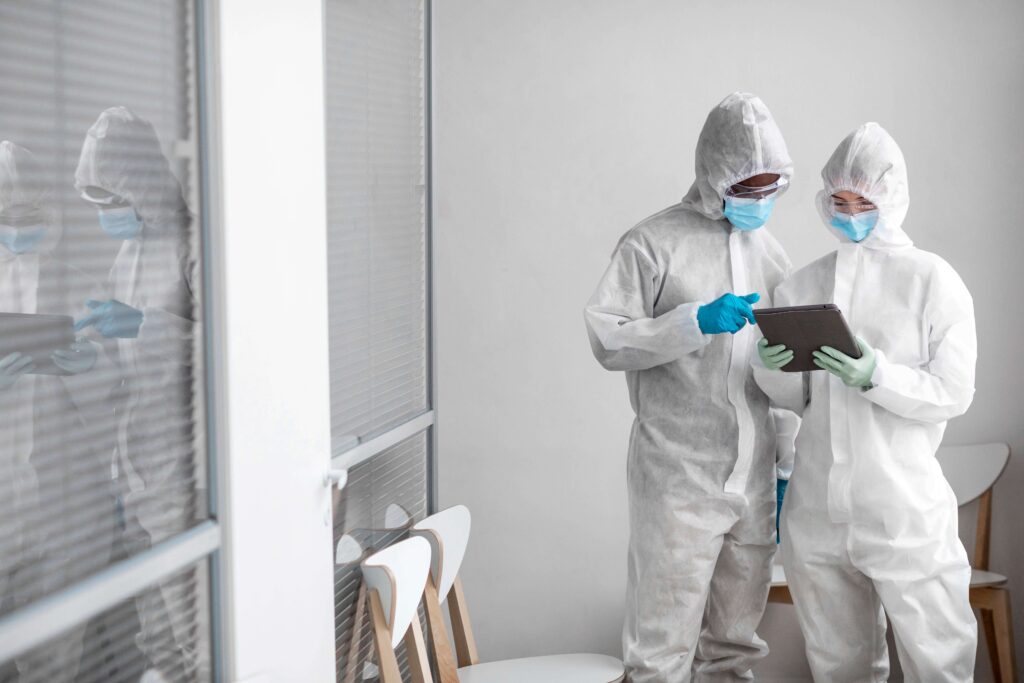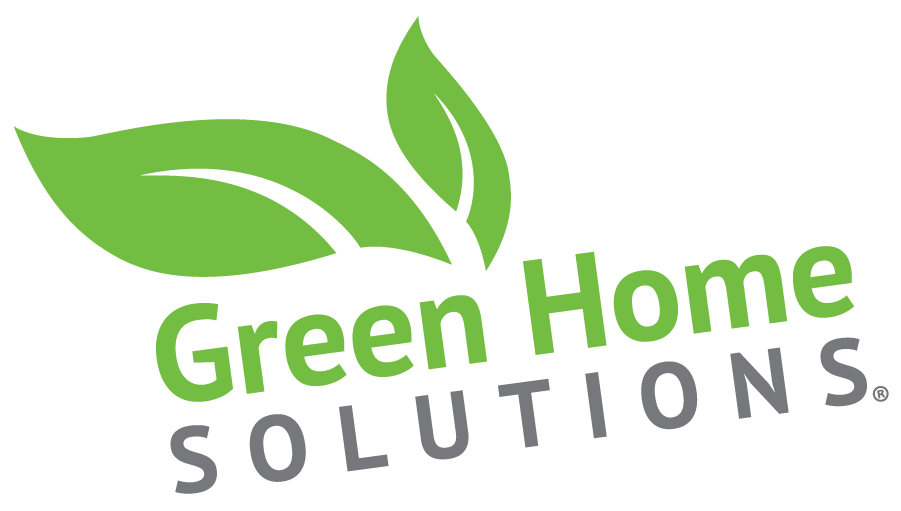
Chicago’s humid summers and fluctuating temperatures create perfect conditions for mold growth in homes throughout the city. From Lake Shore Drive condos to suburban bungalows, mold can silently damage your property and threaten your family’s health. Understanding how to properly test for mold gives you the power to protect your home and loved ones before problems escalate.
Mold testing isn’t just about identifying visible growth—it’s about detecting hidden spores that could be compromising your indoor air quality right now. Whether you’re experiencing unexplained allergies, musty odors, or want peace of mind after water damage, knowing your options for mold detection can save you thousands in repairs and medical bills.
At Green Home Solutions, we’ve helped countless Chicago homeowners identify and address mold issues using safe, effective methods that don’t disrupt your daily life. This guide will walk you through everything you need to know about testing for mold, from DIY options to professional inspections.
Why Testing for Mold is Crucial
Mold poses serious risks to both your health and property value. Chicago’s climate, with its hot, humid summers and cold winters, creates temperature fluctuations that lead to condensation problems—a primary catalyst for mold growth.
Health symptoms from mold exposure include respiratory issues, headaches, fatigue, and skin irritation. Children, elderly individuals, and those with compromised immune systems face heightened risks. The Centers for Disease Control and Prevention reports that mold exposure can trigger asthma attacks and cause allergic reactions even in healthy individuals.
From a financial perspective, untreated mold can decrease your home’s value significantly. Real estate transactions often require mold inspections, and buyers may walk away from properties with known mold issues. Early detection through proper mold testing allows you to address problems before they become costly remediation projects.
Insurance companies typically don’t cover mold damage that results from neglect or failure to address moisture issues promptly. Regular mold testing helps document that you’re maintaining your property responsibly.
DIY vs. Professional Mold Testing
DIY Mold Testing Options
Home mold test kits are readily available at hardware stores and online retailers. These typically include surface swabs, air sampling cassettes, or petri dishes that you mail to a laboratory for analysis.
DIY testing costs between $10-$50 per kit, making it an affordable first step. However, these tests have significant limitations. They can’t tell you the concentration of mold spores in your air, may miss hidden growth areas, and often produce false positives from naturally occurring outdoor spores.
Most importantly, DIY kits don’t provide interpretation of results or recommendations for remediation. You might detect mold presence but remain uncertain about the severity or necessary next steps.
Professional Mold Inspections
Professional mold testing near me services offer comprehensive assessments that DIY kits simply cannot match. Certified inspectors use specialized equipment to detect moisture levels, take precise air samples, and identify problem areas that aren’t visible to untrained eyes.
Professional inspections typically cost $300-$800 in Chicago, depending on your home’s size and complexity. This investment includes detailed reporting, laboratory analysis, and expert interpretation of results. Many companies, including Green Home Solutions, provide recommendations for addressing any issues discovered.
The expertise factor cannot be overstated. Professional inspectors understand building science, moisture dynamics, and how Chicago’s climate affects different construction types. They can identify why mold is growing and how to prevent future occurrences.
Methods of Professional Mold Testing
Air Sampling
Air sampling measures the concentration and types of mold spores in your indoor environment. Inspectors use specialized pumps to collect air samples, which are then analyzed in laboratories to determine spore counts and species identification.
This method is particularly effective for detecting airborne mold that may not be visible. Inspectors typically take samples from multiple locations, including areas of concern and control samples from outside your home for comparison.
Surface Sampling
Surface sampling involves collecting samples directly from suspected mold growth areas. Inspectors use tape lifts, swabs, or bulk samples to gather material for laboratory analysis.
This approach works well when visible growth is present, allowing for species identification and concentration levels on specific surfaces. It’s often combined with air sampling for comprehensive assessment.
Moisture Detection
Professional moisture detection uses thermal imaging cameras, moisture meters, and hygrometers to identify water intrusion and high humidity areas. Since mold requires moisture to grow, identifying these conditions helps predict where problems might develop.
Advanced moisture detection can reveal hidden leaks behind walls, under floors, or in ceiling areas that aren’t visible during standard inspections.
Visual Inspection
Trained professionals conduct thorough visual inspections of your entire property, including basements, crawl spaces, attics, and HVAC systems. They understand where mold typically grows in Chicago homes and can spot early warning signs that homeowners might miss.
Interpreting Mold Test Results
Understanding your mold test results requires knowledge of normal spore levels, species identification, and health implications. Professional testing services provide detailed reports that explain findings in clear language.
Spore counts are measured in spores per cubic meter of air. Normal outdoor levels in Chicago typically range from 100-1,000 spores per cubic meter, depending on the season. Indoor levels should generally be lower than outdoor counts and similar between rooms.
Elevated indoor spore counts or significantly higher levels in one area compared to others indicate potential problems. Certain mold species, such as Stachybotrys (black mold), require immediate attention regardless of concentration levels.
Professional reports include recommendations for remediation when necessary. These might range from improving ventilation and reducing humidity to professional mold removal for extensive contamination.
The Cost of Mold Testing in Chicago
Mold testing Chicago prices vary based on several factors: home size, number of samples needed, testing methods used, and company reputation. Basic visual inspections start around $200, while comprehensive testing with air sampling typically ranges from $400-$800.
Additional costs may include follow-up testing after remediation ($150-$300) and specialized testing for specific concerns like HVAC contamination. However, these costs are minimal compared to the potential expense of widespread mold remediation or health issues from untreated exposure.
Many Chicago companies offer package deals that include both testing and remediation services. While convenient, ensure the company maintains proper separation between testing and remediation to avoid conflicts of interest.
Choosing the Right Mold Testing Service
Selecting a qualified mold inspection near me service requires research and attention to several key factors. Look for companies with certified inspectors who hold credentials from organizations like the American Council for Accredited Certification or the National Association of Mold Professionals.
Experience with Chicago-area homes is valuable because local inspectors understand regional climate challenges, common construction types, and typical problem areas. Ask about their testing methods, laboratory partnerships, and whether they provide detailed written reports.
Green Home Solutions stands out in the Chicago market by offering eco-friendly testing methods and comprehensive reporting. Our certified inspectors use advanced equipment to provide accurate results without harsh chemicals that could affect your family’s health.
Avoid companies that pressure you into immediate remediation or seem more interested in selling services than providing honest assessments. Reputable companies will explain their findings clearly and give you time to consider your options.
Preventative Measures to Avoid Mold
Prevention remains the best strategy for avoiding mold problems in Chicago homes. Control moisture levels by maintaining indoor humidity between 30-50% using dehumidifiers during humid summer months.
Ensure proper ventilation in bathrooms, kitchens, and laundry areas. Use exhaust fans during cooking and showering, and vent them to the outside rather than into attics or crawl spaces.
Address water leaks immediately, whether from plumbing, roofing, or foundation issues. Chicago’s freeze-thaw cycles can create new leak points each winter, so conduct regular inspections.
Clean and maintain your HVAC system regularly, including ductwork cleaning and filter replacement. Consider upgrading to high-efficiency filters that capture mold spores.
Protecting Your Home with Professional Mold Testing
Regular mold testing provides peace of mind and protects your family’s health and your property investment. Chicago’s climate presents unique challenges that make professional assessment particularly valuable for homeowners.
The cost of professional mold testing is insignificant compared to potential remediation expenses, health care costs, and property value losses from unaddressed mold issues. Early detection allows for targeted solutions that prevent small problems from becoming major headaches.
If you’re experiencing musty odors, unexplained health symptoms, or have concerns about your indoor air quality, don’t wait to schedule a professional mold inspection. Contact Green Home Solutions today for comprehensive, eco-friendly testing that prioritizes your family’s safety and your home’s protection.
